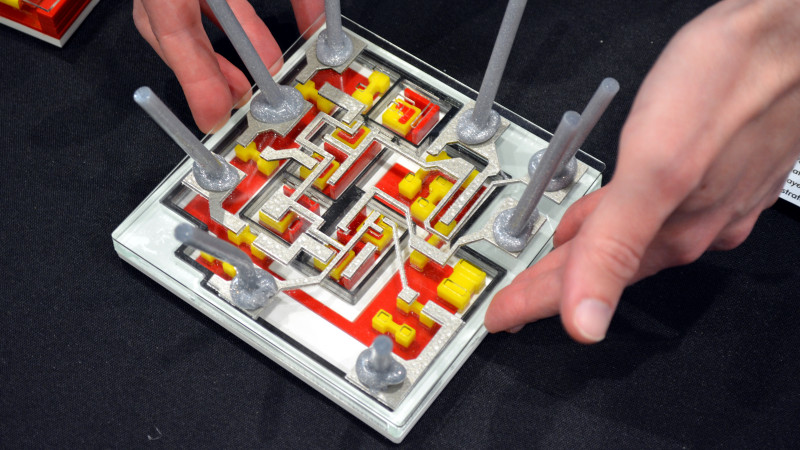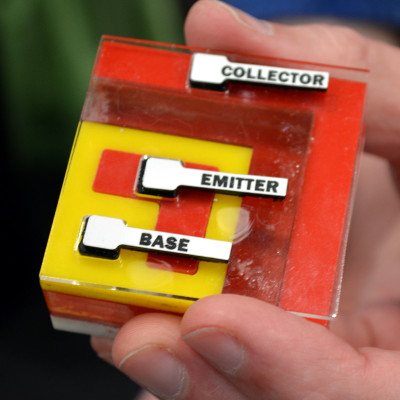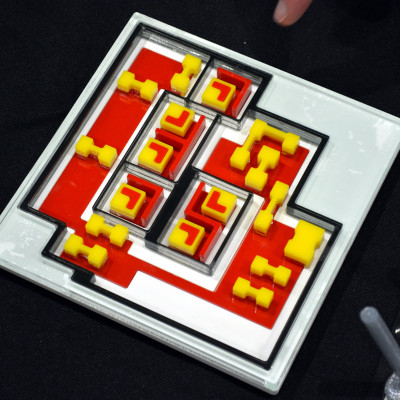Visual aid on the device microcircuit
- Transfer

The author has always admired the work of microcircuits. How does a plate, some areas of which are deliberately dirty, control electrons? And then suddenly someone comes up with a visual aid that makes the principle of operation of the chip as clear as possible. This is exactly what happened at the do-it-yourself fair in the San Francisco Bay area.
At the “Unlock Silicon” booth Windell Oskay , Lenore Edman , Eric Schlepfer , John McMaster and Ken Shirriffthey took a 50-year-old microcircuit and opened its case so that anyone passing by and noticing an unusual exhibit could ask what it was. Fairchild's μL914 chip contains two OR-NOT elements, and it is very simple, and the sections of its structure are simply huge. John McMaster has been cracking chips for a long time and uploading the results to his website . This time, in addition to μL914, he also opened the ATmega328, and the microcontroller blinked LEDs in this form on the stand. Visitors could examine the crystals of both microcircuits under a microscope, but seeing is one thing and understanding is another. And this is what helped them figure out what they were looking at:


The multilayer structure of laser-cut organic glass depicts the electrodes of a single transistor. According to the conventional color symbols and geometric shapes, it is easy to find six transistors in the complete model of the μL914 microcircuit. Now you can understand from the conductors what is connected to.

The author in the device of this chip especially liked the resistors. One type of impurity turns the corresponding section of the crystal into a resistor, but what determines its resistance? It turns out that it is not the concentration of the impurity (it also affects, but it is impractical to regulate the resistance), but the thickness and width. Therefore, the resistors in the chip differ from each other in width, and a very wide resistor is shown on the bottom right of the model. Finally, another exhibit at the stand is a huge operating model of a chip on discrete transistors, where all the elements are located in the same way as on the original topology. And everything works, which proves the correctness of the reverse engineering.
The developers of the visual aid shot a video about him, which is not only interesting to watch. It inspires the production of such manuals for the construction of simple microcircuits.
From the translator: some analog microcircuits, first of all - ULFs, are still not complicated, photos of their crystals are on the network, and internal circuits are known from reference books. So, first of all, such visual aids should be made on them.
